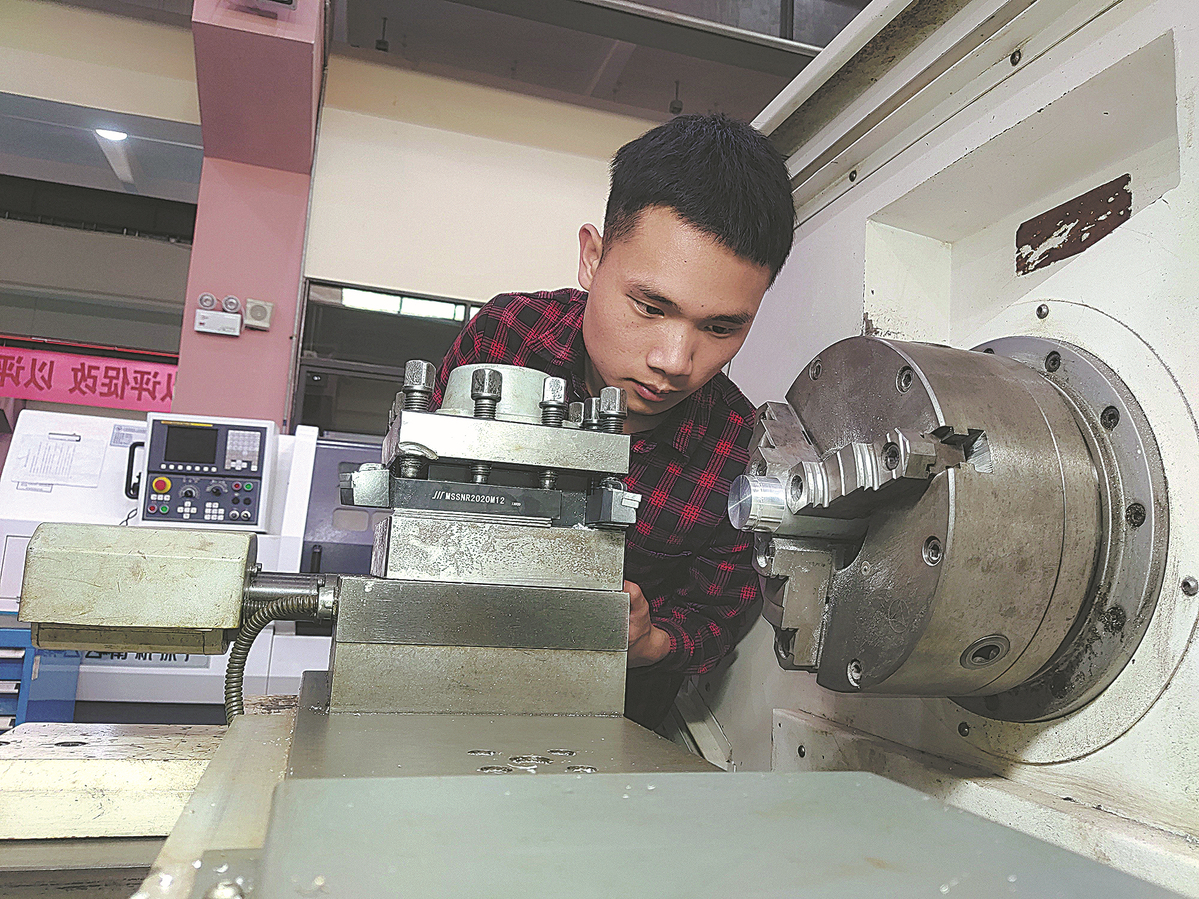Shrinking labor supply poses challenges

This file photo shows a worker working at the practical skills training center at a vocational school in China. [Photo/CHINA DAILY]
Experts say demographics, education system need to be optimized to ensure stability
With China's aging and shrinking working population posing challenges for the country's job market and economic development, experts have called for more efforts to optimize the population structure and education system to ensure sustainable development.
A recent report released by the Central University of Finance and Economics in Beijing said the average age of China's labor force was 39.4 years at the end of 2021 — up from 32.2 years in 1985.
Five provincial-level regions had significantly older working populations, with Heilongjiang topping the list with an average of 41.7 years, followed by two other northeastern provinces, Liaoning with 40.7 and Jilin with 40.5. Chongqing in southwestern China and the eastern province of Zhejiang also had workforce ages well above the national average.
The labor force has also shrunk, with the latest figures from the National Bureau of Statistics showing that the nation's working population — between the ages of 16 and 59 — was about 875.6 million by the end of 2022, accounting for about 62 percent of the total population but down by 6.66 million from the previous year.
"The aging problem and the lengthening years of schooling are the main reasons for the increasing average age of the working population," said Pang Shi, director of the Chinese Academy of Personnel Science's department of employment and entrepreneurship in Beijing.
"China had 210 million people — roughly 15 percent of the total population — over age 65 in 2022, while the average years of schooling of the working population increased to 10.75 years."
She said the working population would continue to shrink.
"It's estimated that the working population will be reduced by 7.9 million a year from 2020 to 2030 and be around 825 million by 2030, roughly 58.6 percent of the total population by that time," Pang said. "The aging problem will last quite a long time and is irreversible."
She said the decrease in the working population and the aging problem would first pose a shock to the job market and then cause a series of social problems, including hampering economic and technological advancement and increasing the burden on the social security system.
Li Qiang, vice-president of online recruitment portal Zhaopin, said the working population should be viewed both in terms of quantity and quality, and China still had demographic dividends that would turn into talent dividends in the future, as the working population becomes more knowledgeable due to increased schooling.
"It can't be denied that the aging problem and aging working population will bring challenges to China's social and economic development," Li said. "But where there's a will, there's a way. For example, employers may offer some vacancies suiting older workers as more elderly people enter the job market.
"Older workers have less physical strength as time passes by, but they have better working skills and experience and can help advance digital technologies in their work."
He added that to better deal with the aging working population, the nation could speed up efforts to adjust its industrial structure to make technology better fit the changing population structure.
"It's important to figure out a reasonable and practical policy on postponed retirement," Li said.
"We working people also need to know the trend and prepare ourselves for an extended working career in the future. The government can improve the social security system together with social organizations and companies, as labor relations or modes of employment may change due to the aging problem in the future."
Pang said the social security mechanism needs to be reformed by channeling more investment to secure its sustainable operation.
"Other thorough reforms in the sectors of education, employment and entrepreneurship are also needed for a more stable society and sustainable development in the face of future challenges," she said.
Photos
Related Stories
- Xi: Step up building of skilled, innovative workforce
- Chinese premier stresses training of highly-skilled workforce
- Commentary: Three reasons warrant China's positive economic outlook in 2024
- Commentary: China's openness, positive economic outlook inject confidence, energy into quality development
- Industrial firms see profit growth for 4th straight month
- China's new business registrations increase in January-November
Copyright © 2023 People's Daily Online. All Rights Reserved.









